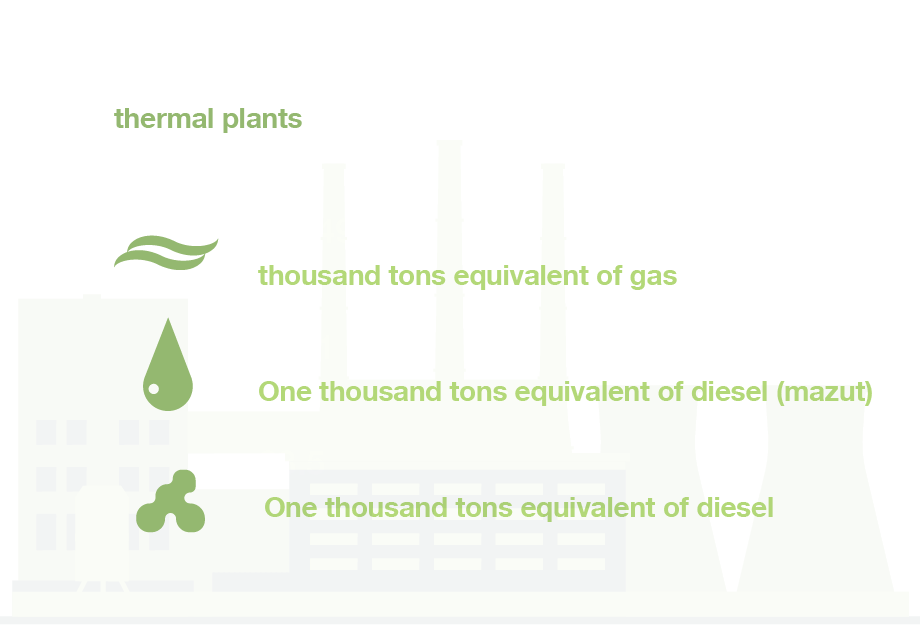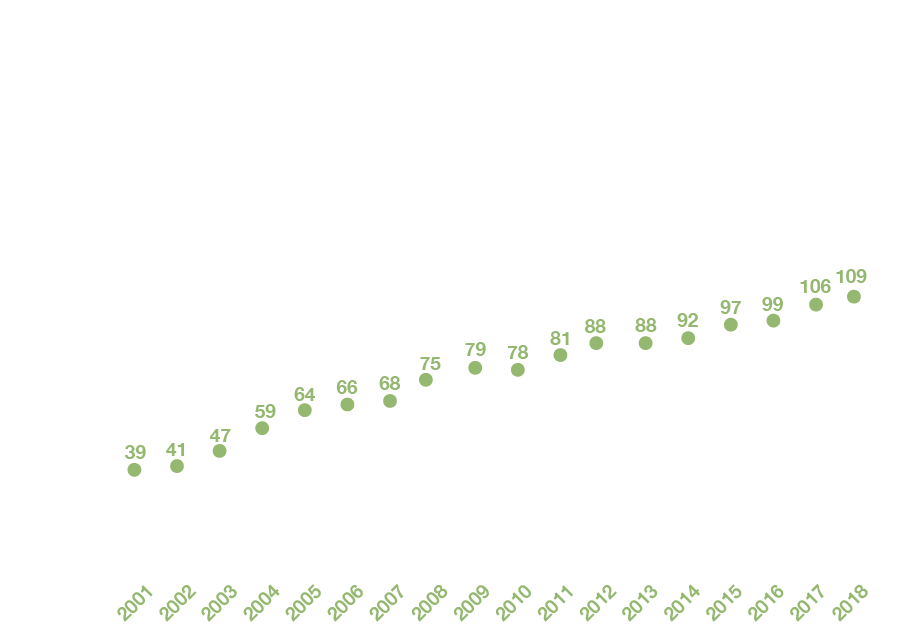Three-quarters of the carbon emissions produced by global warming and climate change in Egypt come from the energy sector, with power plants accounting for nearly half (45%) of these emissions.
Carbon dioxide (CO2), methane (CH4) and nitrous oxide (N2O) are called the three greenhouse gases. The Arab region's emissions of these gases totals around 3.939 billion tons of equivalents, with Egypt accounting for 8% at approximately 329 million tons of equivalent. This is the second most in the Arab world after Saudi Arabia, third after Iran in the Middle East and North Africa, and twenty-second in the world.

In this investigation, we analysed carbon emissions data issued by Climate Watch between 1990 and 2018, the most recent available data, as well as data issued by the Egyptian Electricity Holding Company, and found that the electricity sector and power plants operating on its lands are the largest contributors to greenhouse gas emissions. Egypt mostly generates power using natural gas or diesel power plants, or integrates the two in what are known as combined cycle plants.
According to a 2020 Egyptian Electricity Holding Company report, there are 80 power stations operating in Egypt. 25 of them run on natural gas and diesel; 19 run on natural gas and mazout (low-quality diesel); 11 run on natural gas and 12 run on diesel only.
As for mazout, only one station operates on it – Al-Walidiya station in Assiut governorate, one of the two stations that are the focus of this investigation.
There are just three wind-powered electric stations, two solar stations, one solar station that also runs on natural gas, and six hydroelectric stations.

Egypt has around 59,500 megawatts of nominal capacity, which refers to the potential or capacities that these stations can generate if they operate at maximum capacity. More than half of this capacity (55%) comes from combined cycle plants that run on natural gas in addition to diesel or fuel; nearly a third (29%) comes from steam plants; and gas stations account for only 7%.
Renewable energy facilities have the smallest share of capacity, despite being the least polluting – 5% for wind/solar power plants, and 5% for hydro plants.

Thermal plants are classified into three types: steam plants, gas plants and combined cycle plants. Gas stations generate electricity by directly burning natural gas and driving a turbine. Steam plants harness the thermal energy produced by the combustion of fuel to produce steam as a medium to power turbines. In combined cycle plants, natural gas is burned and used in a gas turbine; when it exits, the exhaust heat is used to make steam that also powers the turbines.
According to the Egyptian Electricity Holding Company's most recent report, in 2020 the thermal stations consumed 30.249 million equivalent tons of gas, 1.861 million equivalent tons of mazut (a low-quality fuel oil), and 23,500 equivalent tons of diesel.
Recent fuel consumption in electricity production peaked in 2018, reaching 37.335 million tons of fuel. It fell in the following two years, to 32.133 million tons equivalent in 2020.

Egypt has signed three climate change agreements: the United Nations Framework Convention on June 9, 1992; the Kyoto Agreement on March 15, 1999; and the Paris Agreement in 2016. The Paris Agreement does not commit any country to specific emissions, but it does obligate all countries to make “national contributions” to emission reduction, reflecting each country's capabilities and responsibilities.
According to the most recent national report for 2018, the Egyptian government plans to boost the contribution of renewable energy to electricity generated in order to meet the national goal of 20% in 2022 and 37% by 2035, as part of a plan to reduce carbon emissions from other plants.
However, according to the Egyptian Electricity Holding Company's 2020 annual report, total electricity generated is approximately 197,357 gigawatts per hour, the percentage of energy generated from new and renewable sources does not exceed 4.4%, and the volume of energy generated from hydroelectricity stations is 7.6%.
The energy sector emits the most carbon, accounting for 73% of total carbon emissions in Egypt in 2018. Followed by the industrial and agricultural sectors with 9% each, then waste. by 8.5% and finally forests by no more than 0.05%.

Carbon emissions from electric power plants account for approximately 45% of the Carbon emission From Energy sector in Egypt, followed by transportation at 22%, manufacturing at 17%, construction at 7%, gas leakage at 6%, combustion of various types of fuels at 2%, and ship fuel at 1%.

Energy is responsible for 91% of total carbon dioxide emissions in Egypt, with only 48% percent of that coming from electricity production plants. Next is transportation, with 24%; manufacturing, with 18%; and construction, with 8%. Ship fuel, leaking gases, and other types of fuel are equivalent to 1% each.

Global carbon dioxide emissions climbed by 81% between 1990 and 2018, the period for the data used in this investigation, while in Egypt they rose 329%, four times that rate. Egypt’s emissions of carbon as a whole represent about 1% of global emissions. Between 1990 and 2018, carbon emissions in Egypt climbed at three times the global rate, increasing globally by 50% and in Egypt by 155%.

The cost of electricity
According to a paper published by the Egyptian Initiative for Personal Rights (Civil Society Foundation), generating electricity from renewable sources such as solar and wind energy is a guarantee of protection of the environment and social life in Egypt, because of its low cost and price as well as its being the least environmentally polluting method. The paper reveals that the environmental impact of oil-powered plants is the highest, followed by natural gas-powered plants. The environmental impact of renewable energy plants (sun and wind) is almost non-existent.
According to Dr. Yasser Hassan, head of the National Research Center's Air Pollution Research Department, the most polluting stations for the environment now operating in Egypt are those that use diesel (Mazut) and diesel (Fuel oil), whereas natural gas stations release little and nearly zero emissions.
Hassan argues that using fuel to generate electricity is damaging to health and the environment since diesel exhaust contains more than 40 different types of toxic air pollutants, including numerous known or suspected carcinogens such as benzene, arsenic, and formaldehyde. It also contains other detrimental environmental pollutants, such as nitrogen oxide, which is currently the leading cause of ozone depletion.
Mark Specht, an energy analyst with the Climate and Energy Program at the Union of Concerned Scientists (a US-based non-profit organization), believes that natural gas may be cleaner than coal and fuels because it produces fewer greenhouse gas emissions and air pollution but is still polluting, as it produces nitrogen oxides which not only cause respiratory problems, but they also react with other materials in the air to produce fine particles, so natural gas power plants have a huge impact on the communities in which they are located.
According to the head of the Air Pollution Research Department that Egypt has already taken positive steps on the ground in terms of generating electricity. Most of the stations currently operating in Egypt run on natural gas, which is less polluting to the environment, and even diesel-powered stations have been converted to run on natural gas.
According to Mohamed Younes, a researcher in energy and the environment at the Egyptian Initiative for Personal Rights, the fracking process, which utilizes a lot of water from local water reservoirs and pollutes waterways, is the largest threat to the use of natural gas. Furthermore, the combustion of natural gas produces carbon monoxide, nitrogen oxides (NOx), and sulphur dioxide (SO2).
In addition, the effect of the fumes that are produced from gas-powered power stations, he says, reduces the quality of agricultural land as well as productivity, causing losses to farmers.
As a result, generating power comes with a societal price that citizens must pay for their health, like in the Walidiya village of Assiut, or their economic losses, as in the town of Abu Ghaleb in Giza.
This section of the investigation is based on the findings of data analysis of Egyptian Electricity Holding Company reports, as well as data from the World Resources Institute's climate watch from 1990 to 2018.
1- Mazut is a heavy, low quality fuel oil, used in power plants.
2- The unit of measurement used in the infographic 1-6-7-8 is one million tons